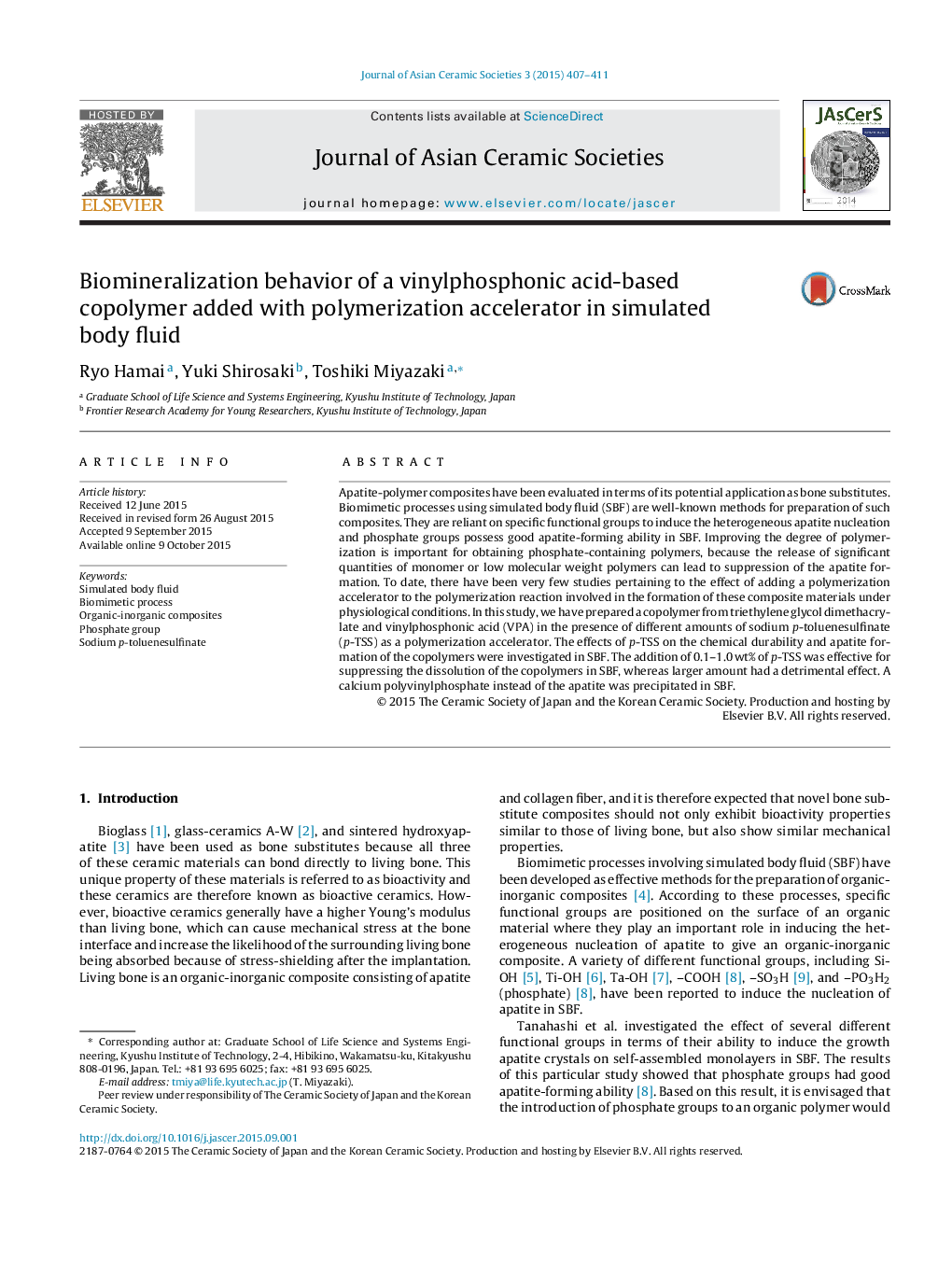| Article ID | Journal | Published Year | Pages | File Type |
|---|---|---|---|---|
| 1473203 | Journal of Asian Ceramic Societies | 2015 | 5 Pages |
•Effects of polymerization accelerator of P-containing copolymers have been clarified.•Chemical durability has been significantly improved by the accelerator addition.•All the phosphate groups do not induce the apatite formation in SBF.
Apatite-polymer composites have been evaluated in terms of its potential application as bone substitutes. Biomimetic processes using simulated body fluid (SBF) are well-known methods for preparation of such composites. They are reliant on specific functional groups to induce the heterogeneous apatite nucleation and phosphate groups possess good apatite-forming ability in SBF. Improving the degree of polymerization is important for obtaining phosphate-containing polymers, because the release of significant quantities of monomer or low molecular weight polymers can lead to suppression of the apatite formation. To date, there have been very few studies pertaining to the effect of adding a polymerization accelerator to the polymerization reaction involved in the formation of these composite materials under physiological conditions. In this study, we have prepared a copolymer from triethylene glycol dimethacrylate and vinylphosphonic acid (VPA) in the presence of different amounts of sodium p-toluenesulfinate (p-TSS) as a polymerization accelerator. The effects of p-TSS on the chemical durability and apatite formation of the copolymers were investigated in SBF. The addition of 0.1–1.0 wt% of p-TSS was effective for suppressing the dissolution of the copolymers in SBF, whereas larger amount had a detrimental effect. A calcium polyvinylphosphate instead of the apatite was precipitated in SBF.
